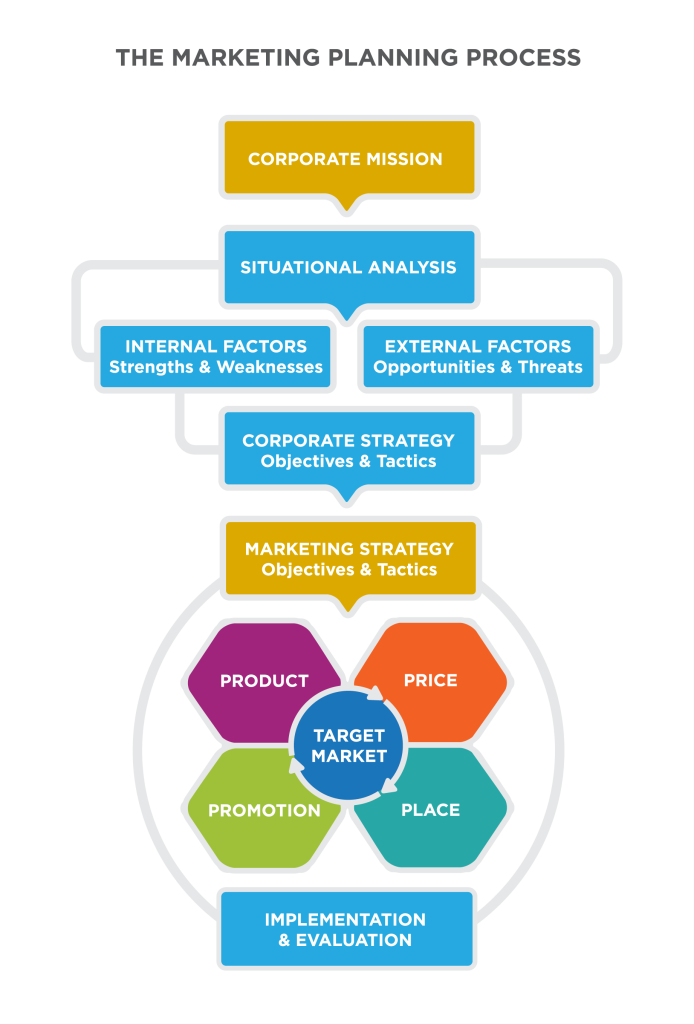Learning Objectives
- Identify examples of social responsibility that create value for customers
- Explain the impact of social responsibility on marketing results
Introduction
You’ll recall that we defined corporate social responsibility as the ethical behavior of a company toward society. It means acting responsibly toward the stakeholders—not just the shareholders—who have a legitimate interest in the business. Let’s focus on how marketers use corporate social responsibility to achieve marketing objectives.
First, let’s return for a moment to the marketing planning process. Where does social responsibility fit in? It generally comes into the planning process in one of two ways:
- Social responsibility may be a corporate-level strategy with specific objectives.
- Social responsibility may be part of the marketing mix based on the situation analysis
Let’s look at both of these approaches.
Corporate Strategy at Coca-Cola
Coca-Cola’s mission is:
- To refresh the world . . .
- To inspire moments of optimism and happiness . . .
- To create value and make a difference.
In support of the vision, the company has created what it calls a “roadmap” that defines the focus areas for company strategies and tactics. These include:
- People: Be a great place to work where people are inspired to be the best they can be.
- Portfolio: Bring to the world a portfolio of quality beverage brands that anticipate and satisfy people’s desires and needs.
- Partners: Nurture a winning network of customers and suppliers, together we create mutual, enduring value.
- Planet: Be a responsible citizen that makes a difference by helping build and support sustainable communities.
- Profit: Maximize long-term return to share owners while being mindful of our overall responsibilities.
- Productivity: Be a highly effective, lean, and fast-moving organization.[1]
Which of the roadmap areas focus on social responsibility? “Planet” is clearly a social responsibility focus, as it acknowledges a responsibility to improve the world beyond the sale of Coca-Cola’s products. “People” also suggests a note of social responsibility; Coca-Cola strives to be a place where employees are not only doing a good job for the company but are inspired to be their best as people.
Marketing Strategies to Address Childhood Obesity
Coca-Cola doesn’t specifically call out customer health in its roadmap, but that concern has become a significant component of its marketing strategy, and the company has developed a specific set of marketing programs to address childhood obesity. Childhood obesity is a challenging issue for the company. If you were to conduct a SWOT analysis of Coca-Cola, you could imagine that this issue would appear under “external threats” and have a negative impact on its market. In most K–12 schools in the United States, the sale of soft drinks has been steadily eliminated. Rather than wait to find out how this trend might play out, marketing decided to take a proactive role. In 2013, Coca-Cola announced its four global well-being commitments to help fight obesity, each of which has a direct impact on the marketing mix:
- Offer low- or no-calorie beverage options in every market. (Product)
- Provide transparent nutrition information, featuring calories on the front of all of our packages. (Product)
- Help get people moving by supporting physical activity programs in every country where we do business. (Promotion)
- Market responsibly, including no advertising to children under 12 anywhere in the world. (Promotion)[2]
Coca-Cola has added a number of water and juice brands to its product portfolio in order to achieve these social responsibility objectives, and has devoted a substantial budget to develop physical activity programs in its markets. The tone of the company’s advertising has shifted to focus on an older audience.
Increasingly companies around the world are including some social responsibility objectives in their corporate-level plans. The majority of U.S. companies in the S&P 500 and Fortune 500 provide reporting to investors on their sustainability goals and performance.[3] In South Africa, companies are required to provide such reporting in order to be listed on the Johannesburg stock exchange.
With this emphasis and accountability, social responsibility is no longer regarded as a “special project,” but is becoming an integral part of the corporate and marketing planning process that is central to business performance and success.
- http://www.coca-colacompany.com/our-company/mission-vision-values/ ↵
- https://www.coca-colacompany.com/annual-review/2013/highlights.html ↵
- http://www.ga-institute.com/nc/issue-master-system/news-details/article/number-of-companies-in-sp-500R-and-fortune-500-R-reporting-on-sustainability-more-than-doubles-1.html ↵
